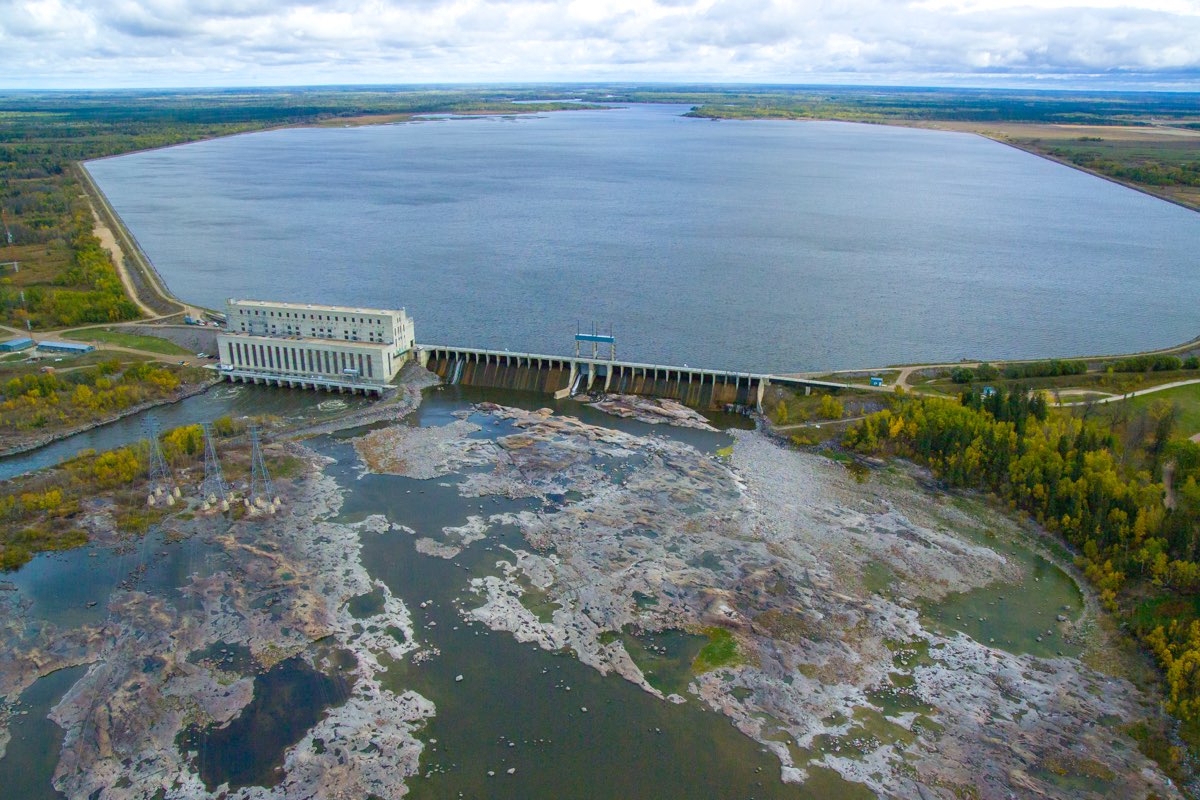Manitoba reservoirs are MISO’s rechargeable battery

When most people think of batteries, they think of the battery in their car or those classic copper tops. But luckily for us (and for our neighbors), Manitoba Hydro has some of the best batteries around: our hydro reservoirs. They can store energy for minutes, hours or days, making electricity available when needed.
By constantly adjusting the amount of water flowing in our river systems we can match our customers’ changing need for electricity. We make these adjustments at generating stations, where we use either more or less water to turn our turbines.
At night — when electric demand is lowest — we hold water back, filling our reservoirs and “charging the battery.” During the day when demand is high, we release this water, tapping into our water battery as necessary. Under ideal conditions, Manitoba Hydro can swing its generators almost 3,000 MW to meet the fluctuating power demand.
MISO’s battery
Because Manitoba Hydro is interconnected with MISO, our ability to store energy helps us respond daily to more than the needs of just Manitobans. We also adjust to the needs of the MISO electricity market.
And it’s not just the hourly and daily swings in MISO supply and demand. It’s the moment-by-moment variations: our system can respond on a five-minute basis, absorbing as much as 500 MW of electricity from MISO in one moment and sending it back to the market five minutes later. Swinging from one five-minute period to another helps MISO keep the grid in balance. And since these adjustments are shared across the hydro system, any moment-to-moment changes in water levels are almost imperceptible, smaller than the impact of a breeze blowing across the water.
Smoothing things out for other renewables
Using hydro storage this way is becoming more and more important to the grid. As variable and intermittent energy sources like solar and wind grow in use, they add to the challenge of keeping supply and demand in balance, minute by minute. But the Manitoba battery is helping meet the challenge in a cost-effective and environmentally friendly way.
With the new 695 MW Keeyask Generating Station under development in northern Manitoba and a new 900 MW interconnection being built between Manitoba and Minnesota, the Manitoba battery is getting bigger — and so is its storage capability for the MISO market. The new interconnection will increase MISO’s import capability from Manitoba by 50% and its export capability to Manitoba by 100%. A 2013 MISO study, (the Manitoba Hydro Wind Synergy Study) concluded that pairing proposed new hydro generation in Manitoba with US wind generation could produce weighted average load cost savings in the US Midwest of $430 million per year in 2027.
Home improvements
Our existing Manitoba battery is 5,200 MW. That’s a lot already, but we can increase that capacity through repowering. Many of our stations are 50, 60 and 70 years old and repowering holds opportunities to significantly expand our existing battery capacity.
Prior to repowering, the 60-year-old Kelsey Generating Station had a capability of 224 MW. Over the past decade, new turbines and generators have increased that hydro station’s capability to 292 MW, a 30% increase. That’s an additional 68 MW of capacity added to the Manitoba battery with no changes to the station’s footprint.
Canadian hydropower
“We hear a lot about lithium battery farms as ways to backstop and smooth out intermittent renewable electricity generation as it fluctuates,” said Dan Prowse, Transmission and Special Projects Officer for Manitoba Hydro. “That technology has its place. But when you take into account cost, environmental impact, dispatchability, safety, reliability, and most of all convenience, Canadian hydropower is just as much if not more effective.”
Similar to MISO’s access to Manitoba storage resources, New England is looking north to take advantage of Quebec’s massive hydro reservoirs. To put that resource into perspective consider that Quebec can store the amount of power that would take 4500 to 6500 years for the Tesla Gigafactory to produce.1
When considering storage options a clear case for water storage can be made: with very low greenhouse gas emissions, extremely long generation asset lives, and a robust system of high-voltage transmission lines connecting Canada to the U.S., Canadian hydropower could well be considered the best battery in North America.
1 “The Value of Quebec’s Hydropower in a Decarbonized Northeast Electricity Sector”, Institut De L’Energie Trottier, August 30, 2017 workshop
